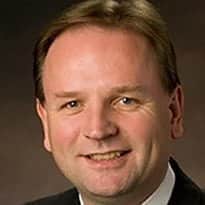NHS England chief executive Simon Stevens has called for the creation of a digital urgent care ‘front door’ for the health service, as the performance of A&E has become an early general election issue.
NHS England yesterday released information about where £700 million of ‘winter pressures’ funding has been spent, with Stevens arguing that “the NHS, the Department of Health and local clinicians have done everything that could be reasonably expected to plan carefully and expand services over the winter.”
However, in a statement accompanying the data he added: “For the future it is clear that we also need a fundamental redesign of the NHS urgent care ‘front door’ – A&E, GPs, 999, 111, out of hours, community care and social services.”
NHS England also released information about A&E performance over the festive season yesterday, which showed that in the immediate run-up to Christmas the NHS saw 446,500 attendances at A&E; up 38,000 on the same week the previous year.
The commissioning board argued that since “more than nine out of ten” attendees were still treated within the four hour target time, this meant the health service “successfully treated more patients in under four hours than ever before.”
But most broadcasters and newspapers focused on the number of patients not treated within four hours in the week before Christmas.
The Guardian reported that ‘type 1 A&E departments’ (or those most commonly recognised as A&E departments by the public) treated just 83.1% of patients within the target time, while the BBC focused on the performance of A&E, urgent care and walk-in centres, which collectively treated 90.2% of patients within the target time.
Shadow health secretary Andy Burnham said the figures were the worst “since records began”. The pressure on primary care has helped to push the NHS into the political spotlight as the major parties launch their campaigns ahead of the general election on 7 May.
On Monday, Labour promised a £2.5 billion transformation fund for the NHS, and to repeal the Health and Social Care Act 2012, which enacted the reorganisation ordered by former health secretary Andrew Lansley.
Yesterday, the Liberal Democrats promised to use the “proceeds of growth” to give the health service the £8 billion that Stevens has estimated it will need on top of £22 billion of efficiency savings, to close the gap between funding and demand that threatens to reach £30 billion by 2020-21.
Chancellor George Osborne said in his autumn statement that the NHS will receive an additional £2 billion next year, as a “down payment” on Stevens’ ‘Five Year Forward View’ proposals to curb demand through a new focus on public health and to increase efficiency by introducing new service models.
Stevens himself told the FT at the weekend that the NHS needed an end to “boom-bust” funding from governments of all stripes.
He also reiterated some of the comments he made in the planning guidance for the NHS in 2015-16, issued just before Christmas, about the importance of new digital services.
In particular, Stevens said new garden cities – such as Ebbsfleet in Kent – and rapidly expanding conurbations – such as Swindon – will be used as ‘test beds’ for new ways of doing healthcare, and become “health service new towns.”
He said that in these areas, patients would be encouraged to sign up for “virtual surgeries” and communicate with them via Skype and digital devices.
At one point, the commissioning board looked set to replace NHS Choices with an ‘integrated customer service platform’ that was billed as “the new digital front-door for the NHS.”
However, the beta-launch of the ICSP in November 2013 turned out to be a re-launch of the existing site, with some new features focused on the transparency agenda, rather than on diverting people from bricks and mortar services.
A beefed up NHS 111, which has also been described as “a new front-door for the NHS” is due to go live in 2015-16, as a result of NHS England medical director Sir Bruce Keogh’s review of A&E and urgent care.

